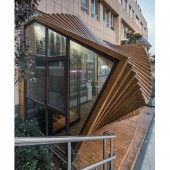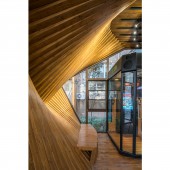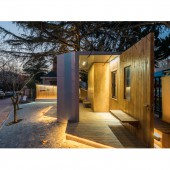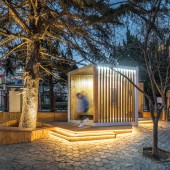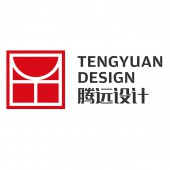We Share Micro Nest Public Welfare Architecture by Tengyuan Design |
Home > Winners > #95337 |
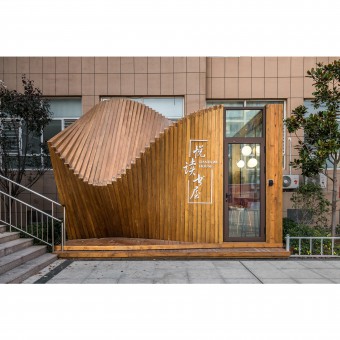 |
|
||||
| DESIGN DETAILS | |||||
| DESIGN NAME: We Share Micro Nest PRIMARY FUNCTION: Public Welfare Architecture INSPIRATION: The purpose of this design is to explore the possibility of interaction between social groups, and to make efficient use of public resources from the perspective of environmental protection and energy conservation. Taking this as a starting point, designers hope to provide people with a platform to share resources through city plug-ins. UNIQUE PROPERTIES / PROJECT DESCRIPTION: We Share Micro Nest, the first public welfare community construction practice project initiated by the architectural design firm in the country, to build a city furniture for citizens to share. Designers hope to attract public participation with behavior by building such a miniature "city plug-in", they will contribute more to urban public services and become responsible for their communities, thus activate the spiritual vitality of the entire district. OPERATION / FLOW / INTERACTION: In addition to meeting the functions, urban renewal should pay more attention to people's psychological feelings and life experience. Therefore, a behavioral memory point is preserved in the site design, which broadens the tread surface of the kindergarten wall, so that residents can watch the activities inside the kindergarten more safely. At the same time, it also wants to stimulate new behavioral memory points, and combine human behavior with the big trees in the middle of the field. PROJECT DURATION AND LOCATION: The project started in January 2018 in Qingdao and finished in July 2018 in Qingdao. FITS BEST INTO CATEGORY: Architecture, Building and Structure Design |
PRODUCTION / REALIZATION TECHNOLOGY: Reading house uses the rotation of the square wooden frame to express the gravitational force of the interior space, while forming a smart exterior shape. Native wood is selected to realize the skin is the structure. The rest station is based on a cube, two pieces of maintenance door panels can be opened to the inside and outside. The shell interface is the main image display, and the colorful aluminum plate is used to create a rich visual and environmental experience. SPECIFICATIONS / TECHNICAL PROPERTIES: The Reading House covers an area of about 23.9 square meters and a building area of 16.8 square meters. The building height is 4.3 meters. The rest station for sanitation worker covers an area of about 81.5 square meters and a building area of 7.87 square meters. The building height is 2.85 meters. TAGS: Architecture, City Plug-in, Public Welfare Building, Rest Station, Reading House, Natural, Elegant, Cultural RESEARCH ABSTRACT: With the development of the times, the transition from rapid incremental growth to slow stock development in many cities have been completed. So many of the architectural practices we have done in the process of urban renewal are also more suitable for a bottom-up approach, from the individual level to the complex city level, using urban plug-ins to activate the area, building an open platform, and achieving public urban design consensus. CHALLENGE: It is a challenge for designers to achieve the unification of structure and exterior styling. Even a small space of less than 20 meters blends the minds of architects and structural designers. In order to ensure the safety and practicability of the Reading House, the base is reinforced in structure, and the on-site construction is checked. At the same time, it simulates the structural stability of the book house under various external harsh weather conditions. ADDED DATE: 2019-12-11 06:09:32 TEAM MEMBERS (5) : Zhao Guangjun, Wang Zhenming, Zhu Shuhan, Cui Ling and Liu Xin IMAGE CREDITS: Image #1: Photographer Kai Wang, Reading House, 2018. Image #2: Photographer Kai Wang, Reading House 2, 2018. Image #3: Photographer Kai Wang, Reading House 3, 2018. Image #4: Photographer Kai Wang, Rest Station, 2018. Image #5: Photographer Kai Wang, Rest Station 2, 2018. PATENTS/COPYRIGHTS: Copyrights belong to Tengyuan Design, 2018. |
||||
| Visit the following page to learn more: http://www.tengyuan.com.cn | |||||
| AWARD DETAILS | |
 |
We Share Micro Nest Public Welfare Architecture by Tengyuan Design is Winner in Architecture, Building and Structure Design Category, 2019 - 2020.· Read the interview with designer Tengyuan Design for design We Share Micro Nest here.· Press Members: Login or Register to request an exclusive interview with Tengyuan Design. · Click here to register inorder to view the profile and other works by Tengyuan Design. |
| SOCIAL |
| + Add to Likes / Favorites | Send to My Email | Comment | Testimonials | View Press-Release | Press Kit |
Did you like Tengyuan Design's Architecture Design?
You will most likely enjoy other award winning architecture design as well.
Click here to view more Award Winning Architecture Design.


